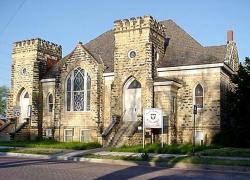| 1490-1775
| Bukovina an integral part of the Principality of Moldavia;
under local rulers but a tributary state of the Ottoman Empire. |
| 1768-1774
| Russo-Turkish War; Russians gain concessions from the Ottoman
Empire by Treaty of Kuchuk Kainarji, making it the chief power in
the Near East. |
| 1772
| First partition of Poland by Russia, Prussia, and Austria in which
Austria annexes Galicia. |
| 1774
| Major General Gabriel Baron von Spleny crosses Galician-Polish
frontier and carries out military occupation of "Austrian"
Moldavia, later called Bukovina; serves as military governor until his
replacement by General Karl von Enzenberg. |
| 1775
| By Treaty of Constantinople, Austria annexes Bukovina which serves
as a land bridge connecting its provinces of Galicia and Transylvania. |
| 1778
| First census of Bukovina shows a population of a little more
than 100,000. |
| 1780
| Death of Empress Maria Theresa after a reign of forty years; accession
to the Austrian throne of Joseph II, an "enlightened monarch." |
| 1781
| Patent of Toleration grants freedom of worship to Protestants and opens
the way for Protestant Germans from outside the Austrian Empire to settle
within its territories. |
| 1782
| Patent of Settlement offers land, farm implements, livestock, and
frame houses to those inside and outside the realm who wish to settle
in Bukovina. |
| 1782-1787
| German Protestants from the Palatinate, Rhineland, and Württemberg
settle in already-existing communities of Arbora, Tereblestie, Illischestie,
Fratautz, Milleschoutz-Badeutz, Satulmare, Molodia, Rosch, Zuczka,
Mitoka-Dragomirna, and Czernowitz. |
| 1784-1809
| Germans from the Zips (Spiss in today's Slovakia) brought to Bukovina
by Anton Manz who had gained concessions to exploit mineral deposits after
silver, lead, iron, and copper had been discovered; miners settled in
Jakobeni (1784), Kirlibaba (1797), Luisental (1805), and Freudental (1807);
others put down roots in Stulpikany, Frassin, and Paltinossa. Manz provides
housing and garden plots for those in his employ. |
| 1786-1849
| General Karl Baron von Enzenberg recalled by Vienna; military government
withdrawn; Bukovina administratively linked with Galicia; Polish orthography
adopted for the spelling of many place names in Bukovina. |
| 1787-1792
| Catherine II's second war against the Ottoman Empire; further
encroachments by Russia at the expense of the Turks by the Treaty
of Jassy. |
| 1789
| Summoning of the Estates General by Louis XVI of France; outbreak of
the French Revolution. |
| 1790
| Death of Joseph II; accession to the Austrian throne of Francis I
(known as Francis II in his capacity of Holy Roman Emperor). |
| 1792-1815
| Six major coalitions against revolutionary France and Napoleon. |
| 1793
| Second partition of Poland between Russia and Prussia. |
| 1793-1817
| First wave of state-sponsored Germans from Bohemian Forest
(present-day Czechoslovakia); settlements in Althütte (1793), Karlsberg
(1797), Fürstenthal (1803), Neuhütte (1815); some had first
homesteaded in Galicia. |
| 1795
| Third partition of Poland between Prussia, Russia, and Austria;
Poland liquidated from the map of Europe until its restoration in 1919. |
| 1804
| Coronation of Napoleon as Emperor of France. |
| 1806
| Demise of Holy Roman Empire after more than 800 years; replaced by
Confederation of the Rhine with Napoleon as its "protector." |
| 1810
| Marriage of Napoleon to Archduchess Marie Louise von Hapsburg,
daughter of Francis I. |
| 1815
| Congress of Vienna attempts to restore the old order after defeat of
Napoleon; German Confederation of thirty-nine states under presidency of
Austria replaces Confederation of the Rhine; wave of political repression. |
| 1835
| Death of Francis I; accession of Ferdinand I as Emperor of Austria. |
| 1835-1850
| Second wave of German settlers from Bohemian Forest settled in Bori and
Lichtenberg (both in 1835); Schwarztal and Buchenhain (Deutsch-Pojana-Mikuli,
both 1838), Augustendorf (1850), and Glitt (1843). |
| 1848-1849
| Revolutionary turmoil spreads throughout Europe. Austrian Chancellor
Metternich flees; Ferdinand I abdicates in favor of eighteen-year-old
Francis Joseph I, destined to have the longest reign of any monarch in
modern times (sixty-eight years); Bukovina becomes an autonomous crown land;
last vestiges of feudalism rescinded; poor harvests and cholera epidemics. |
| 1854
| First telegraph service in Czernowitz. |
| 1860
| End of state-sponsored colonization; German professionals, officials,
artisans, and farmers migrate to Bukovina on their own initiative. |
| 1862
| Manz mines go into receivership; miners reduced to dire economic
straits until well into the twentieth century; emigration from Bukovina
in search of better livelihood begins. |
1863
| German Protestant daughter colony of Alexanderdorf founded. |
| 1866
| Prussia secedes from German Confederation; outbreak of Seven Weeks'
War (Austria and German Confederation against Prussia and Italy); demise
of German Confederation; Austria excluded from German affairs by Treaty of
Prague; outbreaks of cholera in Bukovina; railroad completed linking Lemberg
(Lvov) with Czernowitz.
|
| 1867
| Ausgleich (compromise) with Hungarians in Austrian Empire;
establishment of Dual Monarchy of Austria-Hungary which lasts until end
of World War I; national unrest within Empire intensifies. |
| 1868
| Beginnings of a viable press in Bukovina with the publication of the
Czernowitzer Zeitung; by the end of Hapsburg period Bukovina
emerges with most sophisticated journalistic tradition in southeast Europe
in which the German press predominates.
|
| 1869
| Austrian census reveals a population in Bukovina of more than 500,000
including 40,000 Germans; enactment of law for compulsory elementary school
education (Reichsvolksschulgesetz) throughout Austrian Empire;
German Protestant daughter colony of Katharinendorf founded. |
| 1871
| Proclamation of German Empire under Prussian leadership. |
| 1875
| Founding of Francis Joseph University in Czernowitz, with faculties in
law, philosophy, and theology; easternmost German-language university until
its Romanization in 1919. |
| 1883
| First telephone in Czernowitz. |
| 1885
| German Protestant daughter colony of Neu-Zadowa founded. |
| 1893
| German Protestant daughter colony of Nikolausdorf founded. |
| 1900
| Sixty post offices in Bukovina equipped with telegraph. |
| 1905
| National Theater opened in Czernowitz. |
| 1913
| Eichenau, the last German colony in Bukovina, founded through the
auspices of the Association of German Agricultural cooperatives
(Verband Deutscher Landwirtschaftlicher Genossenschaften). |
| 1914
| Assassination of Archduke Francis Ferdinand in Sarajevo; outbreak of
World War I. |
| 1915-1917
| Intermittent Russian occupation of Bukovina. |
| 1916
| Death of Francis Joseph I; accession of Charles I, last reigning
Hapsburg monarch. |
| 1918
| Defeat of Central Powers; collapse of Austria-Hungary; Romanian troops
occupy Bukovina; German National Council (Deutscher Volksrat für
die Bukowina) votes to support union with Romania. |
| 1919
| Treaty of St. Germain by which Bukovina passes to Romanian
administration; although treaty contains provisions for the protection of
ethnic and religious minorities, these are not incorporated into
Romanian constitution. |
| 1919-1923
| Romanization of schools and civil service; those not competent in
Romanian language are removed from their positions; German National
Council works to promote and safeguard German cultural interests. |
| 1921-1924
| Agrarian reform carried out throughout Romania. |
| 1924
| All public schools removed from community control and placed under
jurisdiction of the state. |
| 1925
| Centralization of government; Bukovina loses its provincial status and
autonomy; divided into five administrative districts: Czernowitz,
Storozynetz, Radautz, Suczawa, and Kimpolung, which are governed
directly through Bucharest. |
| 1928
| Of the seventy-three German public schools in operation in 1913, only
one remains open. |
| 1930
| Census shows 853,524 inhabitants of whom 8.9 percent are German. |
| 1930-1939
| Great Depression; high tariffs and a policy of autarchy intensify
economic problems. |
| 1933
| Adolf Hitler becomes chancellor of Germany, with dictatorial powers. |
| 3/1938
| Anschluss (annexation) of Austria to Germany. |
| 9/1938
| Munich Agreement paves way for Germany's annexation of the Sudetenland. |
| 1939
| German-Soviet Non-Aggression Pact; fourth partition of Poland in modern
times; World War II; ethnic Germans permitted to leave Soviet-occupied Baltic
States and eastern Poland for resettlement in the Third Reich. |
| 1940
| Soviet annexation of Bessarabia and northern Bukovina; Germans in
northern and southern Bukovina permitted to immigrate en masse to Germany;
some 95,000, or all but 7,000, avail themselves of this opportunity. |
| 1941-1944
| Germany attacks Soviet Union; Bukovina reoccupied by German
and Romanian troops. |
| 1944
| Evacuation of Germans seeking to escape advancing Soviet armies
begins. |
| 2/1945
| Yalta Conference sanctions Soviet annexation of Bessarabia and
northern Bukovina; northern Bukovina incorporated into Ukrainian
Soviet Socialist Republic. |
| 5/1945
| World War II ends in Europe. |
| 7/1945
| Potsdam Conference sanctions "humane and orderly" transfer of
indigenous German population in eastern and southeastern Europe; over
12,000,000 German refugees and expellees stream westward; transfer results
in death to tens of thousands due to massacre and privations. Many Germans
forcibly repatriated to Soviet Union and Bukovina. |
| 1949
| Lifting of Allied ban on association in western sectors of Germany;
Landsmannschaft der Buchenlanddeutschen (Association of Bukovina
Germans) established to safeguard social, cultural, and economic
interests of Bukovina Germans. |
| 1950
| Expellee associations (including Landsmannschaft der
Buchenlanddeutschen) sign charter supporting right to homeland but
eschewing violence and revenge. |
| 1954-1966
| "Economic miracle" under chancellors Adenauer and Ehrhard
leads to rebuilding of Germany and gradual integration of refugees and
expellees into West German economy. |
| 1970s
| Detente and Ostpolitik of Chancellor Willi Brandt open door
for resettlement in Germany of ethnic Germans still living in eastern-bloc
countries, including several thousand from Bukovina and Transylvania. |
| 1980s
| Under the Ceausescu regime, Romania emerges as the poorest country
in Europe; food shortages, rationing, power outages, and political
surveillance become a way of life; Germans wishing to immigrate to Federal
Republic of Germany must pay high sums for an exit visa in a process
that may take years. |
| 1989
| Peaceful dismantling of the Communist regimes begins in Eastern
Europe following massive protests in Leipzig, Prague, Warsaw, Budapest,
and Sofia; Berlin Wall comes down amidst great fanfare and celebrations,
its pieces sold internationally as souvenirs of a bygone era. In Romania
government resistance to demonstrators results in at least 70,000 deaths.
After a dictatorship of twenty-four years, the rule of President and Party
Secretary General Nicolae Ceausescu ends as he and his wife Eleana are
executed after a summary trial. |

